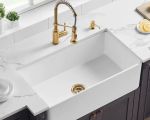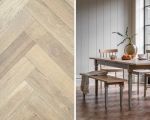- 1-DIY-Bathroom-Shelf-Basics
- 2-Material-Selection-and-Tools
- 3-Planning-and-Designing-Your-Shelf
- 4-Step-by-Step-Construction-Guide
- 5-Personal-Experience-and-Tips
- 6-Where-to-Find-the-Best-Materials
1. Understanding the Basics of a DIY Bathroom Shelf
Creating a DIY shelf for your bathroom is an excellent way to enhance your storage space while adding a personal touch to your décor. Unlike generic store-bought shelves, a custom-built shelf can perfectly fit your bathroom’s dimensions and style. The key is to balance functionality with aesthetics—your shelf should be sturdy enough to hold toiletries and bathroom essentials while complementing the existing design.
One common challenge many face when organizing a bathroom is limited space. Building a shelf yourself lets you optimize every inch, making use of awkward corners or empty wall space. For example, a friend of mine recently built a floating shelf above her bathroom sink using reclaimed wood. Not only did it save space, but it also became a charming focal point that guests noticed immediately.
2. Choosing the Right Materials and Tools
The foundation of any successful DIY bathroom shelf project lies in selecting the appropriate materials. Since bathrooms tend to be humid environments, it’s essential to choose materials that resist moisture to prevent warping or mold.
Wood is the most popular choice, especially treated or sealed woods like cedar or teak, which naturally resist moisture. Alternatively, using plywood with a waterproof sealant is a budget-friendly option. Metal brackets or supports can add both stability and an industrial look. For tools, basic woodworking equipment like a drill, screws, measuring tape, level, saw, and sanding paper will usually suffice.
In one online community, a user shared how using marine-grade plywood dramatically improved the durability of their DIY bathroom shelves, allowing them to last for years without any issues despite heavy moisture.
3. Planning and Designing Your Shelf
Before diving into construction, a well-thought-out plan ensures your shelf will meet your needs and fit perfectly. Start by measuring the available space carefully. Consider the height, width, and depth that won’t overcrowd the room but still provide enough storage.
Design-wise, think about how you want to use the shelf—will it hold towels, small plants, or everyday toiletries? Depending on the purpose, you might want one long shelf or multiple smaller tiers. Sketching your design, even roughly, helps visualize the final product and prevents costly mistakes.
One practical tip is to incorporate adjustable shelves for flexibility. This way, you can change the shelf height depending on what items you store. This feature can be particularly useful if your storage needs evolve over time.
4. Step-by-Step Guide to Building Your DIY Bathroom Shelf
4.1 Preparing Your Materials
Start by cutting your wood to the desired dimensions. Sand the edges to avoid splinters and create a smooth finish. If you’re using untreated wood, apply a waterproof sealant or paint designed for bathrooms.
4.2 Assembling the Shelf
Attach the brackets securely to the wall using a drill and appropriate anchors, especially if mounting on drywall. Use a level to ensure the brackets are straight. Then, place the shelf boards on top and fix them to the brackets with screws.
4.3 Finishing Touches
Once assembled, add any decorative elements like a coat of paint, varnish, or even hooks beneath the shelf for hanging towels. Allow the shelf to dry fully before loading it with items.
During construction, I found that pre-drilling holes prevents wood from splitting, a small detail that saved me time and frustration. Also, double-checking with a level after each step guarantees a professional look.
5. Insights and Tips from Personal Experience
In my own bathroom shelf project, I learned that patience and precision are critical. Taking the time to measure twice and cut once made a significant difference. I also recommend investing in quality sealant to protect the shelf from humidity. Over time, a well-sealed shelf keeps looking fresh and lasts much longer.
Another lesson is to adapt the design to your style—adding a pop of color or rustic finish can transform a functional piece into a statement décor item. Moreover, sharing your project on platforms like Improvement allows you to find top-rated products and services tailored to your specific DIY needs.
6. Finding the Best Materials and Services
To ensure your bathroom shelf is both durable and stylish, sourcing the right materials is crucial. Improvement offers a curated selection of wood, sealants, brackets, and even custom design services to assist DIY enthusiasts. Their expert advice and product recommendations can save you time and help avoid costly mistakes.
Many successful DIYers report that using specialized products from trusted suppliers makes all the difference in achieving a professional finish. Whether you’re a beginner or experienced builder, reliable materials and support make the process smoother and more enjoyable.








